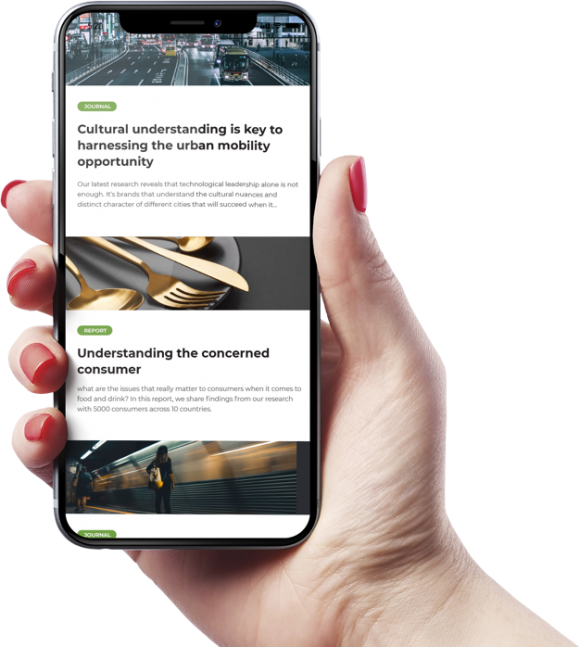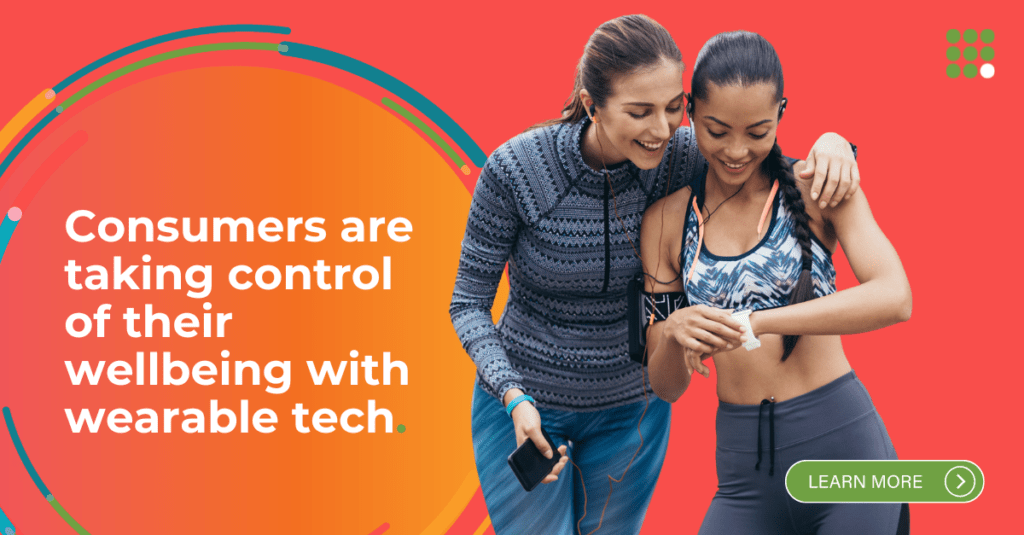Marketers trust numbers. They chase click-through rates and dissect survey scores as if spreadsheets could decode desire. Yet the more data brands collect, the less they understand why people buy. Most decisions occur before logic ever enters the room, triggered by a scent, a colour shift, or a fleeting tone, which elicits neural responses long before awareness catches up.
In How Customers Think, Harvard professor Gerald Zaltman notes that as much as 95 percent of purchase decisions take place in the subconscious mind. That insight should have rewritten marketing decades ago. It didn’t.
For years, the industry asked conscious questions of an unconscious mind. Focus groups and satisfaction metrics often yielded tidy answers, but sometimes the wrong ones. Now researchers are studying emotion itself, decoding how feelings drive choice. The consumer brain has become the new focus group, narrowing the distance between understanding and influence.
What began in neuroscience labs is reshaping how business understands value. In Frito-Lay’s research on Cheetos, consumers who claimed embarrassment over “finger-licking” in focus groups behaved differently when observed, smiling and engaging with the product freely. That contrast shows how brands can capture authentic reactions, not just verbal ones.
How Emotion Shapes Market Performance
What moves consumers to buy, share, or stay loyal often can’t be articulated. Traditional testing tools measure awareness, recall, and intent, but those metrics overlook what truly drives behaviour: emotional connection.
Testing is evolving to capture what people feel, not just what they report. Through techniques such as facial coding and response tracking, researchers can identify emotional peaks and dips as consumers interact with advertisements, packaging, or prototypes.
The Case Study: Cheetos and the Power of EEG

Image Credit: AdsSpot
One of the earliest examples of emotion-based testing reshaping creative decisions came from Frito-Lay’s Cheetos “Orange Hand” campaign in 2008. The ad showed a woman secretly adding Cheetos into a friend’s load of white laundry, leaving the clothes covered in the brand’s signature orange dust.
Traditional focus group results
In conventional testing, participants reported disliking the commercial. Many described the prank as mean-spirited and claimed they didn’t like the woman who played it. On the surface, the data suggested the ad should be pulled.
EEG data reveals the truth
When the same group was shown the ad while wearing EEG headsets, the results flipped. Brainwave readings revealed spikes in positive emotional engagement during the prank scene — viewers were, in fact, amused. Researchers concluded that participants had restrained their true reactions in the focus group, as they were worried that laughing at the prank would make them appear unkind.
How the ad was improved
Armed with this insight, Cheetos chose to move forward with the campaign. The spot went on to become a hit, its mischievous humour striking the exact emotional chord that EEG data predicted.
Key takeaways for advertisers
- Uncover hidden responses: EEG revealed genuine, unfiltered reactions that consumers consciously masked.
- Prevent costly missteps: The findings saved Frito-Lay from shelving what became a highly successful campaign.
- Validate creative risk: Emotion data provided evidence that audiences respond positively to unconventional humour, even when traditional research suggests otherwise.
The Cheetos experiment marked a turning point, proving how emotion data can reveal hidden reactions that predict campaign success. The lesson was unmistakable: emotion data can predict success and protect creativity.
Since then, brands such as Nike and Coca-Cola have developed testing frameworks centred on emotional response, utilising gaze tracking or facial coding to refine their campaigns before launch. Evaluations of P&G’s “Thank You, Mom” confirmed that subtle expressions of empathy outperform grand gestures, proving sincerity can be scaled.
Treating emotion as an early KPI enables brands to test ideas before committing full budgets, thereby reducing creative risk and speeding up time to market.
For brands, this changes the central question from Did consumers like it? to Did it make them feel something lasting? In that difference lies the future of testing, where emotion becomes both a metric and a mirror, revealing what people value before they can explain it.
Making Product Testing More Human
Emotion-based testing brings empathy back to the research process. Instead of analysing what people say after the fact, it captures how they react in the moment. It reintroduces the human understanding, showing how people truly feel, not just what they claim to think.
This shift is transforming how creative and product teams collaborate. Rather than debating abstract preferences, they align around evidence of real response. Product designers observe how people interact with a prototype; marketers track where attention is drawn or diverted; researchers interpret these patterns within their context. The result is testing that feels less mechanical and more human-centred.
A beauty brand, for instance, might use emotion-based observation in packaging tests. Participants interact with unbranded prototypes while researchers capture subtle cues, such as surprise, delight, and hesitation, before any verbal feedback. These signals reveal which designs feel intuitive or trustworthy, not just which ones participants say they prefer.
Emotion measurement doesn’t constrain creativity; it strengthens it. It gives creative teams confidence to defend ideas that connect instinctively, even when they challenge convention. And it reminds insight teams that data alone can’t explain why something feels right. Only people can.
Done well, emotional research is more about sensitivity than technology. It’s about designing studies that listen before they ask, observe before they interpret, and treat participants as collaborators in the discovery process. In doing so, it brings brands closer to what consumers truly experience: emotion in its most actionable form.
Responsible Use and Emotional Boundaries in Product Testing
Decoding emotion gives brands unprecedented power, and with it, profound responsibility. As testing tools grow more sophisticated, the ethical boundaries around emotional insight are becoming a measure of brand integrity itself. The deeper a company ventures into understanding how people feel, the greater the risk of crossing the line from understanding into manipulation.
The first boundary is transparency. Participants deserve to know when and how emotional responses are observed. Whether researchers use facial mapping, implicit association tests, or simple observation, the process must be clear and consensual. When people understand how their reactions are being analysed, they engage more openly, and that honesty produces better data.
The second boundary is consent, which must be informed, deliberate, and reversible. Subconscious measurement may feel passive, but it still requires agency. Giving participants control over how their data is used fosters long-term trust, a commodity that is increasingly scarce in both research and marketing.
Cultural context is the third frontier. Emotion does not translate uniformly. A furrowed brow may signal confusion in one country and concentration in another; a smile may mean politeness rather than joy. Failing to account for these nuances can derail global campaigns, resulting in misinterpreted insights.
Finally, there is the moral distinction between observing and engineering response. Emotion insights should deepen empathy, not exploit it. The goal is to understand what makes people connect, rather than to exploit what makes them vulnerable.
Regulators are catching up, from the EU’s AI Act to new privacy rules in the US and Asia that restrict the use of emotion recognition in advertising. Soon, ethical leadership will be as much about compliance as it is about conscience.
The Future of Product Testing
Over the next decade, product testing will move from one-off studies to continuous emotional tracking. Success will depend on how well brands interpret subtle signals of trust, excitement, or frustration and use them to refine their design in real-time. As markets become increasingly crowded and attention fragments, understanding how people feel about a product will matter just as much as how they use it.
Future testing models will merge rational evaluation with emotional insight. Validation will no longer stop at functionality or preference; it will measure the feelings a product evokes—trust, pride, belonging—and how those emotions influence long-term behaviour.
Emotion-based insights will form continuous feedback loops, tracking shifts in sentiment as products and markets evolve. Research will transition from a checkpoint to a living system, enabling brands to stay emotionally aligned with their audiences.
Testing is now a strategic driver rather than a validation step. Competitive advantage will come not from how much data a company gathers, but from how intelligently it interprets it. When emotion becomes part of the innovation process, research stops confirming ideas and starts shaping them.
Ultimately, the breakthrough in consumer testing will come not from better algorithms but from deeper understanding. The future belongs to brands that measure emotion responsibly—using empathy, not exploitation, to shape what they create.
At Kadence International, we envision the next evolution of product and concept testing, enabling a deeper understanding of emotion with integrity. Every glance, pause, and smile reveals how consumers connect with a brand. By translating these unspoken cues into actionable insight, we help companies design products that perform well and feel right.




